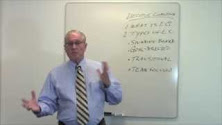 As a leader on-boarding into a new company, the first pep
talk by the CEO or your boss is most often Claudio Fernandez-Araoz, global expert on hiring at executive search firm Egon Zehnder, has said that a
job interview is a conversation between two liars! The interviewer lies about
how great the company is and the interviewee lies about how capable s/he is.
As a leader on-boarding into a new company, the first pep
talk by the CEO or your boss is most often Claudio Fernandez-Araoz, global expert on hiring at executive search firm Egon Zehnder, has said that a
job interview is a conversation between two liars! The interviewer lies about
how great the company is and the interviewee lies about how capable s/he is.
That said, often CEOs and hiring managers tell you to hit
the ground running, to break some china, to make things happen, or to stir the
pot. Often their complaint is that the organization has gotten stale,
complacent. Putting pressure on you to set it all right in your first 90 days
is pure and utter nonsense. They know it and you know it.
However, you still take the bait—bad advice. Then in about
6-12 months, the culture rejects you like a bad virus. And what’s worse is that
the same guy who told you to shake things up is now admonishing you for doing
just that. No kidding. This happens with such regularity in companies I have coached
that it’s a cliché.
So, what should you do? First, in the employment interview
or on your first-day-on-the-job discussion with your boss, smile and wave at
whatever s/he says. BUT, DO NOT DO IT. Instead,
make it your job to go slow to go fast. It’s a lot like running a marathon. If
you start out slow and steady, you’ll find your pace and eventually do a lot
better than if you take off like a jack rabbit. Here are some simple but
effective steps:
Step 1. Smile, Breathe, and Listen. Smiling says, “I’m not a
threat.” The LAST thing you want to be is a threat—creates big problems. Breathe
in and out slowly and methodically to reboot your emotions. There’s a lot of
science here. Finally, use the 80/20 conversation rule. Spend 80% of your time
listening and only 20% responding. Good listening is not simply waiting for
your chance to make a point!
Step 2. Ask HR and/or an executive coach to conduct an
assimilation meeting. This involves meeting with your entire team to answer any
questions they might have about you. What’s your leadership style, your pet
peeves, your vision (lay low on this one), your family, your hobbies? This
meeting gives everyone a level set about you and saves a year’s worth of
hit-or-miss encounters. If you’re with a
small company, have all your direct reports make a list of questions they want
you to answer. Ask one person to compile them to keep the process anonymous and
then give you the list before the meeting to think about your answers. Don’t skip
any hard ones if they come up frequently; otherwise, people will think you
sidestep tough stuff—not a good first impression.
Step 3. Meet every one of your direct reports individually.
Spend an hour or more with everyone who works with you. Ask them about
themselves, the work they most like to do, what’s working in the group, what
needs attention, anything that would make their job/life better. No promises—this
is about gathering information. And, no disparaging the leader who preceded you
on the job. Doesn’t ever play well even though it might seem at the time easy
and beneficial to you.
Step 4. Meet every one of your peers individually. Again, as
mentioned above, ask a lot of questions, seek their advice, find out what’s
good about your new team, what needs work, and ask if they will help you
understand the culture. Listen more than you talk.
While there’s more to discuss here, suffice it to say that
going slow in the very beginning of your tenure in a new job is critical to
your success and the corporation’s success. It will feel counter to your very
anxious inner voice telling you to “just do it.” But DON’T do it until you know
what, how and when to do it! Cultures have to accept you before they accept
your opinion.
I explain it this way to my clients: A young man brings home
his girlfriend—who is a top interior designer in New York City—to meet his
parents. While his parents are out of the room getting dinner and wine ready
for the meal, the girlfriend/designer begins to rearrange the living room to
make it even more beautiful. Despite how good it now looks or the extent of her
expertise, ponder for a moment how those parents might react!
Go slow to go fast later, once you’re accepted into the
tribe.









